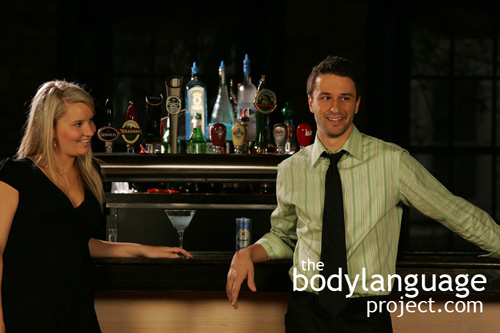Throughout this chapter being “open”, refers to a frame of mind that is willing to accept information, to hear others out and to consider taking action whereas a closed mind, or being closed indicates the opposite. As mentioned previously, having an open and receptive mind is indicated in body language through the absence of closed postures.
It has been shown that frowning requires more muscles and effort than does smiling and so naturally our default facial expression is the smile. Similarly, openness as it relates to body language is the default mode because a relaxed body requires less effort than one that is tensed or closed. To take a negative posture, we must actively close our bodies off requiring effort and to exercise effort we need motivation. In this case, motivation can come from any fearful or unwanted stimulus that precedes a fight or flight response. That is to say that, closed body language are the postures we while see as a negative decision is being analyzed and so is a predictor of a bad outcome.
Being completely open allows us take our most comfortable position, such as what we might do on a couch or in bed in our own house. We might lay our arms out and take up space, put our hands above our heads, spread our legs open or even lay down completely. Having open body postures is akin to being totally exposed to the word and all the harmful things in it, but possessing no fear of harm. Of course, we permit ourselves to hold open postures precisely because we expect nothing harmful to happen. In other words, our bodies are permitted to relax when we are open and contract and tighten when we are closed.
Thus, it takes muscular effort to close the body off whereas open postures occur without action at all. When viewing open body language imagine the extremity of the postures, which as mentioned, can be likened to being on a couch at home. An even more dramatic example is to view open body language as that language exhibited by someone who is intoxicated. Their language is loose, their arms sway freely, they stagger, they have no worries about being ridiculed or attacked and they don’t cross their arms or legs. The cerebral cortex of the drunk, the part of the brain that helps in judgment, amongst other brain centers, is disrupted producing depressed inhibition, increases talkativeness and makes people feel more confident. Alcohol also increases pain thresholds, numbs pain, and makes people feel sluggish because it suppresses the brains ability to function. So for our purpose, the drunk makes a nice example of open body language since he lacks fear, but even if he did, he’d still lack the coordination and strength to carry out a defensive posture.
As a rule of thumb, closed body language happens whenever one of our limbs crosses the mid-point of our bodies. Such is the case during leg and arm crossing. Open postures, on the other hand, happen when the legs and arms remain un-crossed leaving the torso and groin exposed. Of course there are various ways in which the legs and arms can be crossed and these all mean different things which we cover next.


